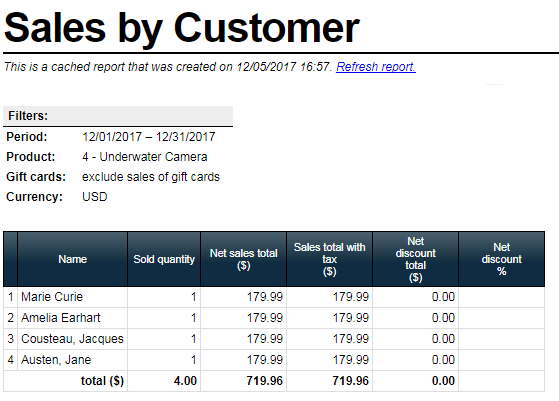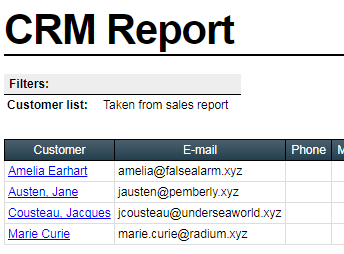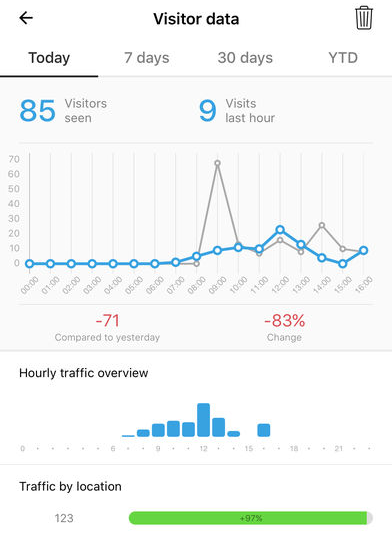The Challenge of Analyzing Consumer Behavior in Retail
The retail industry is in a bit of a shakeup right now, as more than 8,000 stores have closed this (2017) year. Retailersare always looking for ways to increase sales and improve customer retention, especially in the wake of shopping giants like Amazon, which is moving from consumer goods into grocery with the purchase of Whole Foods.
Retailers have increasingly turned to data harvesting to provide new insights about consumer behavior. Technology has made the world of customer data plentiful, resulting in ever more complex data sets. But as the rash of store closings suggest, there is a downside to all this data: how do you analyze the data you collect? What information can you act on to develop the best customer engagement strategies, and what information is useless?
Consumer Engagement Analytics
The most successful retailers
have discovered that all of this information on individual customers is a great foundation for customer engagement. Customer engagement is making an emotional connection with your customer because now, it’s not enough to market to a customer, you must also connect with them as well. In some ways this harkens back to an earlier era when personal service was highly valued by the customer. Changing demographics are driving a shift in consumer behavior. Cities are on the rise, with people fleeing the suburbs and returning to major metro areas. They expect better in-store experiences, engaging displays, and knowledgeable and helpful retail staff who can guide them in making decisions.
These trends all point in one direction: that customer engagement analytics are the key to retail success. An engaged customer is an avid customer: a fully-engaged customer represents 23% more revenue than the average non-engaged customer (Gallup).
Customer engagement
comes in all shapes and forms now, from social media to loyalty programs, and everything in between. While some purchasing decisions are made from purely a practical stance, customers make their purchases on emotion. It’s best to foster an emotional connection with your customers with engagement tactics and good research.
Do you know who your customers are and what they like? Are you engaging with them? Retailers can’t afford to be stagnant on their data collection efforts, and must effectively use the information to build a bridge to their customers. Customers love a
personal touch
, and want to feel like the company sees them individually, not as just a slice of a demographic. While Amazon and Walmart are corporate giants, smaller retailers still have a chance to compete, especially if they give the impression that they know a customer.
Consider this snafu in September 2017: Amazon sent hundreds of users emails about a purchase made on their baby gift registry; the catch was that the recipients didn’t have baby registries, and many who received the emails weren’t happy. The emails weren’t personalized either, instead, sent to “Amazon Customer.” This is an example of how smaller retailers can shine. Your customers need to think that you know them, and care about their wants, needs, and beliefs.
A Periscope poll found that 66% of consumers said they had “no evidence” stores they visited regularly knew them as a consumer. As the Amazon snafu demonstrates, consumers crave a curated and personal experience. The good news is that customers are already freely giving you the information you need to engage with them on their terms.
It’s just up to you to use it
. When you create a customer profile, you likely have their name saved in there; don’t just save it, use it: send personalized communications.
Instagram-savvy brands are big on user-generated content, where they share customers’ pictures. As you capture social media information from your customers, remember to use it by posting questions, news, updates, feedback requests and more on your social media pages. Their responses can give you insight into what your customers want and perceive from your brand. This goes beyond knowing what they want to buy -- it shows you’re actively interested in their feedback. What do they want to try? How do they want to be able to return items? How can you provide alternatives? What does a specific customer need to increase loyalty?
Customer engagement analytics like this help you understand your customers’ desires, both in the aggregate and on a granular, individual level. You can then, in turn, direct your marketing based on these responses.
Interpret Data Into Action
Turn your data into offline action by designing an in-store experience that communicates that you know and understand your customers’ needs. With Erply
, you build a customer database that compiles sales information, including method of payment, their last purchase, etc. You can use Erply’s Sales by Customer Report to identify who is in the store and what items they regularly buy. If your customer recently purchased a camera from your store...why not send them an offer for a discounted camera case or accessory? They likely will need one, and your offer may send them to your store rather than Amazon or Walmart.

Use Erply’s report generator to see which customers purchased a specific product, or anything within a group of products.

Then you can pull up their contact information, and reach out to them with a special promotion.
Sales data
also helps you determine what products are your top sellers and which ones you’ll need to reorder. You will be able to identify patterns in when they buy, what they buy and how much they spend. This data can be used market to individuals effectively. You can design campaigns that increase loyalty especially in your hot markets, and run promotional campaigns directed to specific customers as needed. You can use the data to improve your
loyalty program
, encouraging these customers into the store more often with offers, freebies, and events. If you notice that you’ve sent out 500 loyalty coupons and only had half redeemed, you may want to look into a reminder campaign so your customers are aware of the promotion.
The retailers which thrive on data are not only able to analyze it to their advantage, they are able to
control how data is compiled
. At Erply, we don’t believe in one size fits all. That’s why we created the Report Generator, a tool to let retailers come up with their own reports. What zip code do most customers come from? What’s the average amount of money spent per transaction? What Payment types do customers prefer, and which ones should you offer? The number of questions you could ask are endless, so Erply facilitates this analysis by letting you pull out all sorts of raw data, organize it, export it to Excel and use it to learn more about your customers.
Customer data doesn’t just stop at existing customers, either. Foot traffic data, those customers physically coming into a retail store, is an important metric as well. Who is coming into the store? What time of day did they come in? These factors, along with the average purchase amount for their visits, are valuable pieces of data that can give you a clue as to who your customers are and what they might want. Another important thing to track is how they found you. What made your store visible appear on their radar? Tracking referral sources can give you possible new avenues for promotion.

Erply’s
Retail Counter
app helps stores to capture the amount of foot traffic they get. When are you busiest? Which locations get the most traffic? How does traffic compare to purchases?
To be successful in today’s big-data enhanced environment, it’s
crucial to identify the data you can use
and discard the data that isn’t important. Honing in on customer engagement analytics will help you make the best use of the data you harvest.